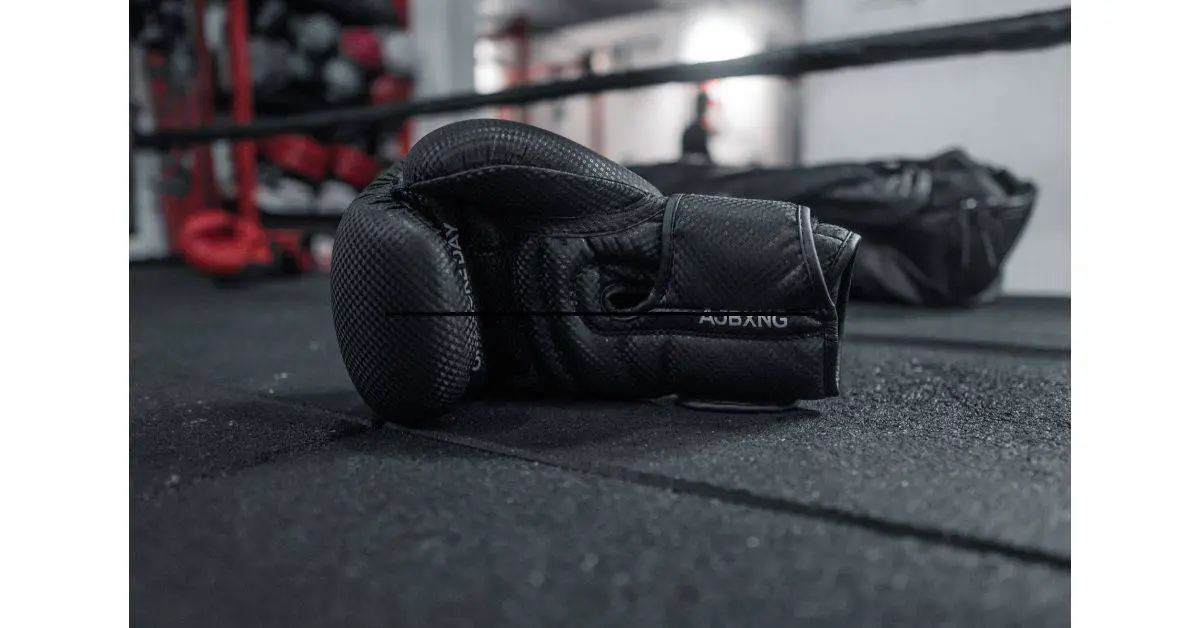Boxing has had its fair share of tragedies, like other sports. The real issue is how its critics portray it. Boxing has shortcomings, but it remains a beloved sport among many followers and fitness lovers who view it as a piece of beauty and not as savage, despite the injuries that occur. Some are even outright lethal. All sports suffer from injuries, and boxing is no exception. But is boxing safe?
Boxing is not safe; to “knock out” your opponent is the entire point of combat sports like boxing and martial arts. Boxing has historically caused major illnesses, disabilities, and injuries for boxers. No contact sport can, unfortunately, be deemed as safe as other non-contact activities.
There is no simple method to foresee potential problems. The only acceptable course of action is to engage in all contact sports with the correct coaching, gear, and training.
Before diving in, if you want to learn how to train boxing right at your home, follow the link to a complete guide I wrote.
Common injuries in boxing
If you are not using the proper form and technique when boxing at home, you are more likely to get hurt. These include concussions, injuries, and facial abrasions from ringside sparring.
The common injuries in boxing are concussions, cuts, strikes to the face, wounds to the hands, fingers, and wrists. Muscle injuries can also result from direct impacts or through pulling muscles. Shoulder dislocations and ankle sprains are common. Many boxers are prone to overuse injuries, resulting in chronic issues with the calves, feet, and knees.

The common injuries in boxing are:
Injuries to the wrist, hand, and fingers
According to the sports medicine journal, hand injuries are the second most frequent injuries for boxers, including amateurs and pros. Due to poor technique, form, and equipment, those practicing at home run a greater risk of suffering a hand injury.
During competition and training on a heavy bag, missed strikes can cause hand and wrist strains. Stress fractures can be brought on by punching or striking repeatedly, and using the poor form makes injuries more likely.
Shoulder Injuries
A strong attack begins from the feet, builds momentum as it moves up the kinetic chain, and then transmits through the shoulder to the hand (Clarkson) (Mansfield). Due to this, boxers are more likely to suffer from rotator cuff tears or labral and rotator cuff strains.
Boxers may experience persistent shoulder pain or ailments like impingement or bursitis over time [2].
Lacerations of the face
Face cuts from being struck by another boxer are the most frequent injuries in this sport [3]. The severity of facial injuries can be lessened or prevented by wearing the appropriate helmet. Plan enough rest time into your training routine. Sleeping for fewer than 8 hours a night has been linked to a 70% higher chance of injury (Active and Safe).
You run a higher chance of getting hurt if you don’t get enough sleep, since you won’t be able to respond quickly enough to defend yourself from a threat.
Concussions
A concussion is a minor kind of traumatic brain damage brought on by a head injury. Depending on how bad the trauma was, you might not go unconscious. Memory loss, disorientation, tiredness, and headaches are just a few symptoms that may appear right away or days after the injury.
In boxing, concussions typically only happen when you are fighting an opponent. Amateur athletes suffer concussions far more frequently in boxing matches, accounting for almost 50% of their injuries (H.R.F.)
Before moving on, if you’re having trouble selecting with martial art you want to learn, follow the link to learn about the differences between boxing and Muay-Thai.
How to avoid boxing injuries
Injury setbacks can be expensive, frustrating, and cause weeks or months of lost training. You can reduce your risk of injury by working with trained and skilled specialists. We’ll examine the most typical injuries suffered by boxers and how to avoid them.

1. Listen to your Trainer.
Your trainer is there to train you, but they’re also there to keep you safe and healthy, so pay attention to what they advise and let them know if you have worries about old or new injuries.
2. Wear safety equipment
Boxing gloves, headgear, and mouth guards are things you should wear when training. Wear the equipment, even if you don’t like it. Protective gear lowers your risk of injury when playing a full-contact sport; always use it properly.
If you want to buy the best protective headgear in the market, ensure to follow the link to buy it on Amazon.
3. Use good form
Utilizing poor form is one of the quickest ways to get hurt. When training, always keep your attention on the proper form. Correct form is important while punching, lifting weights, or sprinting. Ask your trainer to ensure you are doing things correctly, or have a spotter check your technique.
Avoid trying to impress others by doing something risky. Your risk of injury should be decreased by maintaining focus and adopting an appropriate form.
4. Avoid practicing while injured
Many athletes find it difficult to stop exercising while hurt. Despite how unpleasant it can be to remain still, avoid exercising while hurt. Even minor injuries can worsen if left untreated and develop into long-lasting or serious ones.
Take the advice of your physicians and trainers seriously, and wait until your wounds heal properly before starting a new training regimen.
5. Don’t overdo it
Exercising as much as possible when starting a new sport can be tempting. Even elite athletes working toward a goal struggle to know when to stop training and take a break. However, pushing yourself too far and training when you’re exhausted can result in errors and improper form.
Take a rest if you’re fatigued. It’s nice and vital to push yourself, but going too far and risking damage isn’t worth it.
If you want to learn more about the purpose of boxing, follow the link to an article of mine on the topic.
Is MMA safer than boxing?
Every year, MMA gains popularity quickly, drawing more attention to the sport than ever. Due to the violence associated with MMA, particularly among UFC competitors, some people are worried about the safety of the combatants. Which is safer? MMA or Boxing?
Statistics from studies suggest that MMA is statistically safer than boxing. The Sather Sports Medicine Clinic at the University of Alberta conducted one of the most important studies. The study found that boxers are more prone to sustain injuries that will negatively impact their health.
There’s less chance MMA fighters would get injuries that will harm their long-term health. MMA has a greater danger of facial cuts and contusions than boxing. They collected data over ten years, from 2003 to 2013. They were studying 550 boxers and 1,181 MMA fighters’ post-fight medical records.
While MMA is statistically safer than boxing, both are combat sports with significant risks. Although there are better safety measures for both sports, they can still do much to help lower some great dangers for players.

Is boxing high risk?
People appear to be becoming more interested in boxing as a hobby or exercise. While boxing is a terrific way to stay active and reduce stress, it is also a potentially dangerous activity that can result in catastrophic injuries. Understanding the true risks of boxing is a necessary first step.
Boxing is high risk. Boxing puts you at risk of short-term acute head trauma and long-term brain damage. A recent study, for example, discovered that boxing increases the risk of chronic traumatic encephalopathy or CTE, and it can cause the brain to shrink over time.
The risk of neurological illnesses, including Parkinson’s disease, psychological issues, and early mortality, are all associated with shrinking brain regions.
In Neurology, there was a release of the most recent research. The researchers examined the Professional Fighters Brain Health Study, a long-term observational study of professional fighters and controls who did not compete in combat sports. It included 204 active and retired boxers.
According to the study, three brain regions in active boxers shrank compared to controls. 90% of boxers will experience a traumatic brain injury at some point in their careers, according to The American Association of Neurological Surgeons.
A direct blow to a boxer’s head is comparable to being struck by a 13-pound bowling ball moving at 20 mph (32.19 km/h). So boxing is quite a high risk.
Final words
Although boxing has inherent dangers, you may reduce your risk of injury by using common sense, getting the correct gear, and learning when to rest your body. Chronic complications usually result from not treating an injury at the time it occurs. So treat your injury as fast as you can.
If you enjoyed reading this article, I recommend you to read about the rules of boxing. Knowing these will help you avoid injuries by keeping yourself and other trainees safe.
References.
- Mayo Clinic https://www.mayoclinic.org/diseases-conditions/chronic-traumatic-encephalopathy/symptoms-causes/syc-20370921
- Aspetar Sports Medicine Journal https://www.aspetar.com/journal/viewarticle.aspx?id=306#.Yz6Hv3bMKM9
- Southern Medical Journal https://sma.org/southern-medical-journal/article/injury-risk-in-professional-boxing/
- Medicine net https://www.medicinenet.com/script/main/art.asp?articlekey=227224

